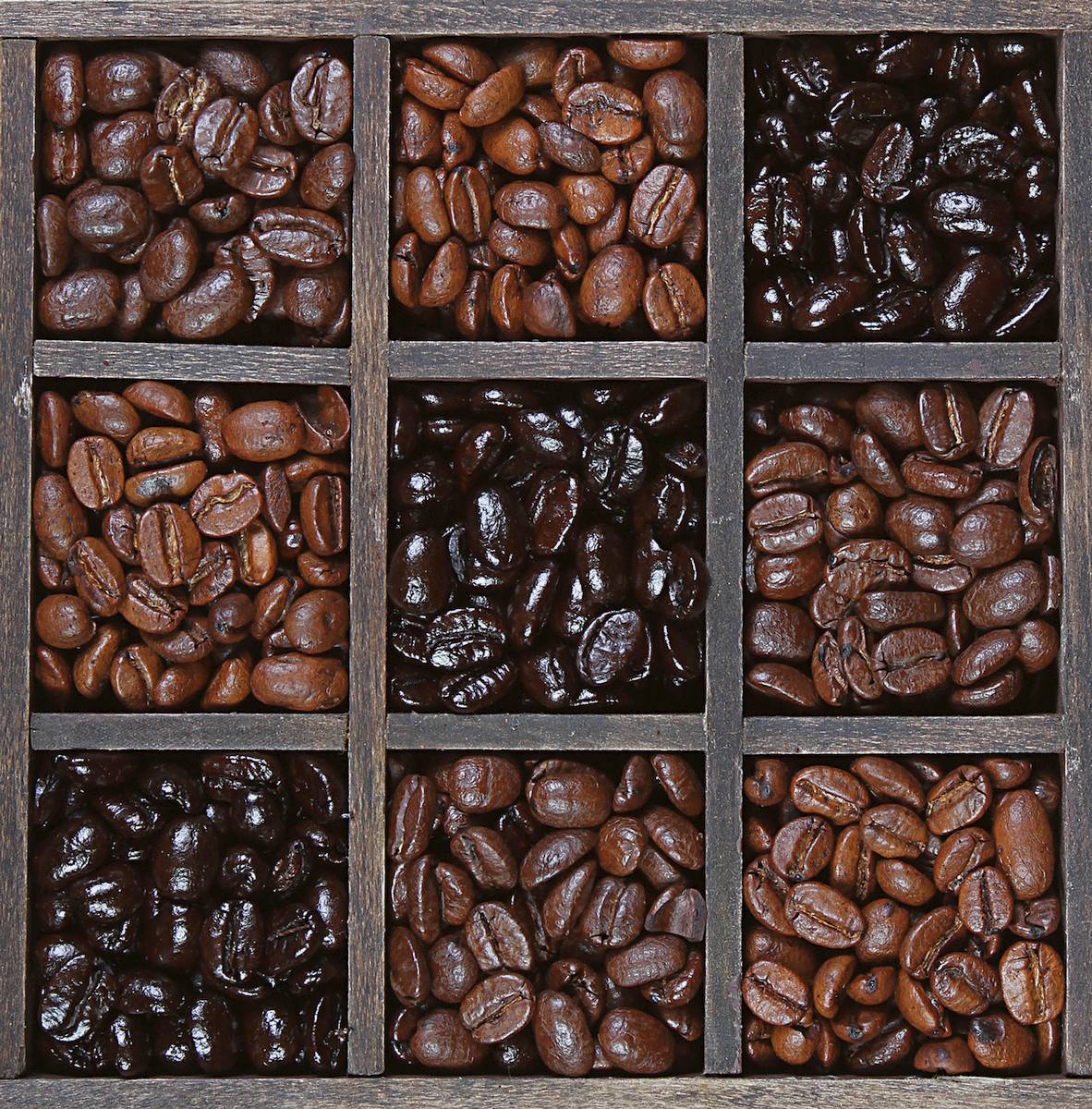Making espresso is half science half art. You use science to guide your extraction, and use intuition to improvise, and create unique experiences, beyond the rigor of science.
One of the most asked questions when I was working as a barista was: “Which roast is best for espresso?” And the question makes sense because espresso has two ingredients coffee beans and water. We get one of them wrong, our espresso will be ruined. There is some science and some personal choice in opting for a coffee roast.
In this article, I will show you how roast degree affects extraction, what kind of flavors to expect from various roasting degrees, and where your personal touch comes into play when choosing the beans.
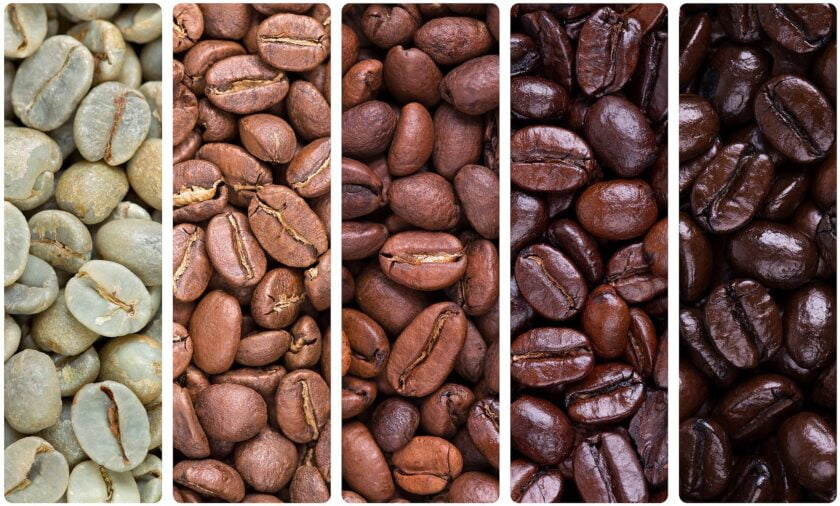
I have an article where I review some of the best espresso beans on the market. Your perfect blend might not even be in that article, after you read this. Or, maybe this won’t give you the full picture, and you will still not know what’s the best beans to choose for your espresso. That is fine. Take this article as a learning opportunity, and read this post where I explain: “How to Choose Coffee Beans for Espresso“. These three articles should get you all of the info to make an informed purchase and refine your coffee taste.
Understanding Espresso Roasts
There is a misconception among coffee lovers regarding the coffee beans used to make espresso. I often get asked what is the difference between regular coffee beans and espresso beans. The reality is that espresso beans are regular coffee beans. But let’s dive a bit deeper into this subject, because it’s important.
What Is Espresso Roast?
Espresso roast is a term that is widely used to refer to a dark roast coffee bean designed for use with espresso machines. The beans are roasted longer and at higher temperatures than other roasts, resulting in a rich, bold flavor and a thick crema when brewed. This is the classic espresso in North America.
Modern espresso is more flexible in terms of roast levels. Any roast level from medium-light is acceptable.
I say many times that there is no such a thing as espresso coffee, or espresso roast. This is just a marketing label to help customers choose faster. It is a great help for the roasters, because they sell easier. But this might not be in our advantage as customers.
Let’s take the Italians, the inventors of the espresso. In Northern Italy they prefer blonde espresso, whereas in the Southern Italy the preference is for dark roasted blends.
Another example is the super-automatic espresso machines. The vast majority of these machines don’t deal well with dark espresso. The oily beans clog the chutes inside the machines, and you do more maintenance than brewing. Many super-automatic owners find out this the hard way. But I’ll talk about this more in a bit.
All of this section was just to make you understand that there is no such thing as “espresso beans”, or “espresso roast”.
But let’s learn how the roast level affects the espresso brewing process. This will give us a better idea on how it affects the final product. You still need to experiment and have an open mind to find the roast that delivers the perfect flavor and body for your taste.
What Is the Best Roast for the Beginner Barista?
The best roast for a beginner barista is a medium-dark.
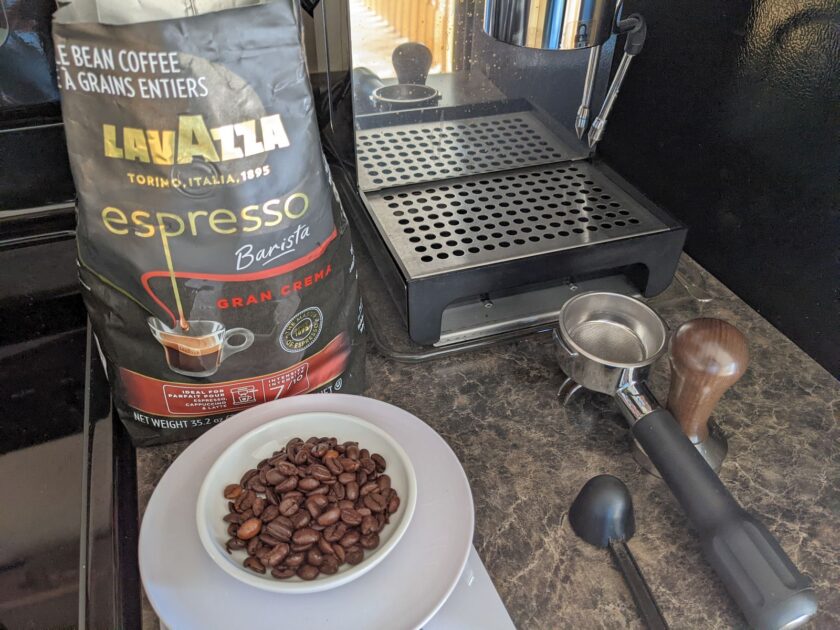
I started with this topic because it’s simple to grasp as a concept, and it offers those who need a simple guide, a quick answer. The concepts in this article will get more complicated as we progress, and it’s only fair to have the simple answer first. Let’s see why medium-dark is the best.
It’s all about solubility. Darker roasts are more soluble, so it’s easier to extract the good stuff, even if our technique is not perfect. If you are looking for simple and classic espresso, an “espresso roast” is what you want.
Let’s assume your shots are channeling, because your technique is not yet perfect. A lighter roast is less soluble so the channeling will be even more pronounced. As the hot water passes through the coffee puck, it has a limited time and contact with the grounds. So if the solubles in the grounds are harder to dissolve, the espresso extraction will be amplified.
The perfect cup of espresso takes time and practice to master. Roasters know this, and they will go the extra length to ensure your success. They an espresso blend to please the vast majority of buyers, and to help you get decent shots when your skills are still budding.
The classic espresso blend is a combination of beans with chocolate and caramel notes, and is roasted to at least a medium-dark color, in order to help you get a successful extraction.
Note that very dark roasts, such a French roast, or a Spanish roast, are not necessarily better, because they have a very pronounced roast flavor. The smokiness that tastes good in an espresso blend, is overwhelming, when using very dark beans.
Now that we covered the classic espresso for those who look for a familiar taste in their cup of coffee, let’s get a bit more technical.
How Does the Coffee Beans Roast Affect Your Espresso
Choosing the right espresso roast depends on several factors, such as the type of coffee bean, desired flavor profile, and brewing method. Roasting coffee beans at different levels can alter the taste, aroma, and acidity of the espresso.
Additionally, the region where the coffee is grown, the altitude, and the processing method can also affect the roast selection and ultimately impact the overall quality of the espresso.
Extraction time and pressure
Extracting coffee requires the right combination of time and pressure. Too much pressure can cause bitterness, while too little time can result in weak flavor. Lighter roasts are less soluble, so they are more difficult to nail. Darker roasts are easier to extract, and they are the roast of choice for beginner baristas.
Flavor profiles
Roasting coffee beans to a darker level can alter their flavor profile by muting the unique flavors that come from their origin. This is because the longer roasting time breaks down the complex sugars and acids that create these flavors, resulting in a more uniform taste, reminiscent of dark chocolate and caramel. However, dark roasts can taste ashy and smoky, which is good, but in small doses.
Blonde espresso beans are trendy now, and for a good reason: they retain more delicate flavors and notes, and enhance the experience of the espresso lover.
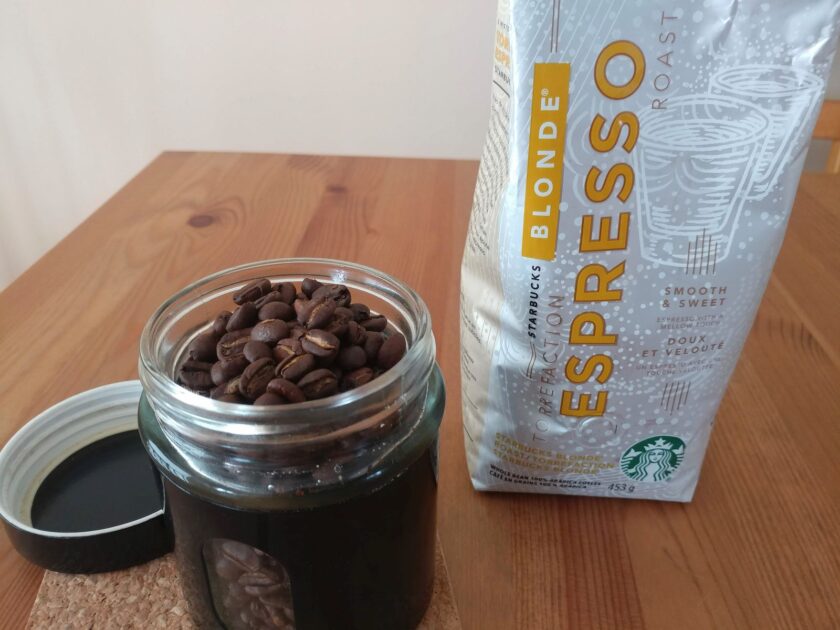
Personal preferences
I probably don’t say this enough. Coffee is personal. Your preference plays the most important role in the selection.
Sure, lighter roasts are harder to nail, but don’t settle for the classic dark roast, if you want to taste origin notes. Modern espresso is more exciting, yes, but the comfort of a classic espresso more appealing for the vast majority of espresso lovers.
In the end, choosing the best roast for espresso is partly objective and partly subjective. If you like the classic espresso blends, you will probably go with a darker roast. If you like to taste the terroir of a single origin, you will need to go with a lighter roast, to preserve the origin notes.
Freshness and Shelf Life
We don’t have to mention the importance of using fresh coffee beans. I talk about it here. But extending the shelf life of your beans can be obtained by simply choosing a lighter roast. To be honest, I don’t recommend you choose your beans this way, but I mention it, because I love blonde espresso.
Caffeine Content
This is another one of the variables that doesn’t matter, if you ask me. If you want more caffeine, just get another shot, instead of counting what’s the difference between light roasts and dark ones. If you need to know though, lighter roasts contain more caffeine than darker ones. The extended exposure to high temperatures during roasting destroys some of the caffeine, but not too much. On the other hand, darker roasts are more soluble, so it’s easier to extract all of the available caffeine from the coffee grounds.
The Equipment
I briefly mentioned earlier in the post that dark roasted coffees are not that great for super-automatic espresso machines. The internal chutes that move ground coffee from one operation unit to the other get easily clogged when the beans are oily. Oily grounds are stickier and the tend to clump and stick in the chutes and on the moving components, effectively destroying your machine.
Many grinders suffer the same fate, they get clogged and the ground coffee just gets suck in the chute, or worse, it accumulates in the burr area. The greasy residue will also accumulate and go rancid inside your equipment, so you will need more regular maintenance.
So, if dark roasts are the perfect beans for your taste, you will need to rethink your equipment choice. Make sure you buy a grinder that can grind oily beans, and buy a semiautomatic espresso machine, as these don’t get affected.
Which Roast Is Best for Espresso? Dark Roast vs Light Roast
By selecting the right roast, espresso enthusiasts can achieve a perfect balance of acidity, sweetness, and bitterness, resulting in a truly satisfying coffee experience.
If we were to say this roast is best for espresso, I’d be wrong. But I will try to explain what are the differences between light roast coffees and dark roast coffees.
What Is the Difference Between Light Roast and Dark Roast
The major difference between dark roasts and light roasts is the solubility, which in turn affects the extraction. In other words, we will extract more soluble solids from a darker roast than from a lighter one. This is why people say dark roasts make stronger coffee.
When you use the same brewing variables, (dose, extraction time, grind size, etc…), coffee brewed with a darker roast will always taste stronger.
So when you hear someone saying dark roasted coffee is stronger, you can reply: “Yeah, dark roasted coffee is more soluble”.
Dark Roasts for Espresso Are Consistent and More Forgiving
We said this before in a different context, but dark roasts are easier to extract because they are more soluble. The problem with them is that they all taste the same. Which is an advantage for those who like their espresso routine unchanged, and they like the taste of the classic espresso.

But if you want to get origin notes that capture the terroir of a single origin, dark roasts are not it.
Here are the main characteristics of dark roast
- Dark brown to almost black color
- Bold and rich flavor
- Ample body
- No acidity
Very dark roasts might be more “dose sensitive”. If you overdose too much your shot, the amount of fines will be too much and there is a chance to plug the holes of your filter basket.
Starbucks are known to pull their shots with very dark roasts, because their flavor survives better their milk-based drinks. Milk-based drinks with a higher content of espresso, such as flat white, or cappuccino, will not taste great, though.
Taste and flavor aside, the biggest problem with dark roasts is that they are very oily. The oily sheen you see on dark coffee is a sign that the beans are still fresh. So it’s good. This oil travels to the beans surface, because the cell structure of the bean is
Light Roasts Are Far More Interesting in Espresso
Let me assure you that lighter roasts are far more interesting, from a flavor perspective than darker ones. From a certain color on, all the flavors are very similar, so coffee origin doesn’t matter anymore. That’s why it’s easy to label a roast as “espresso”. No matter the beans, the blend will taste the same. Coffee quality is not important when we roast so dark, because we can mask any possible defects with the roast flavors. It is not uncommon to get really cheap quality beans sold as a “French roast”.
The main characteristics of the light roast are:
- Lighter color
- Milder flavor
- High acidity
- Bright aroma
Light roast beans are obtained by roasting the beans less time and/or at a lower temperature. The roasting process doesn’t destroy the origin flavors, and this is why they are prized by coffee lovers. When I say light roast I don’t mean “Light City roast“. But a “Cinnamon roast” is perfect for many single origins.
On top of that, you will extract more solubles from darker beans than from lighter ones. This extra amount of soluble solids will muddy the cup, covering any traces of origin flavor.
Big companies such as Starbucks and Nespresso sell blonde espresso capsules and beans, because they realized there is enough demand.
If you prefer a strong, bold flavor, with caramel and chocolate notes, then dark roast beans are the way to go.
If you prefer delicate flavors, such as the floral notes of the Ethiopia Yirgacheffe, or the wine notes of the Kenyan coffee, then a medium-light roast may be the best choice. Either way, the most important thing is to experiment and find what works for you. Single origin espresso is
The Best for Espresso – Medium Roast
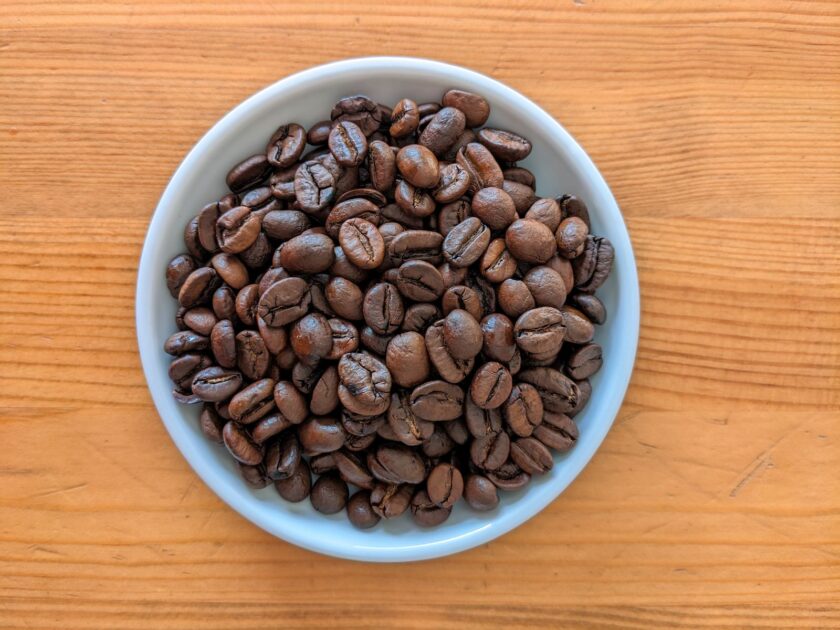
When I say the best, I exaggerate a bit. Like I said, it’s really down to your preferences. But a medium roast provides a balance between flavor and acidity.
The medium roast for espresso is great because it retains the natural sweetness of the beans, and the acidity balances the roast notes. You get to experience the best of the two worlds.
I personally love lighter roasts, but they tend to be too acidic, and this will put off a lot of espresso lovers. So medium roast is the best for espresso.
Conclusion
Ultimately, if you have the knowledge of the roasting process and how to properly store and grind the beans to .
At the end of the day, the best way to figure out which roast is best for espresso is to experiment and see what works best for you. There is no one-size-fits-all answer when it comes to coffee beans – it all comes down to personal preference. The best espresso beans I found were by trying out.
So, get out there and start trying different types of beans until you find the perfect roast for your espresso machine. Who knows – you may even discover a new favorite coffee in the process!
Do you have a preferred type of roast for espresso? Let us know in the comments below! dark roast or light roast for espresso? How do you like your espresso – strong and bold, or delicate and light? Let us know in the comments below!
